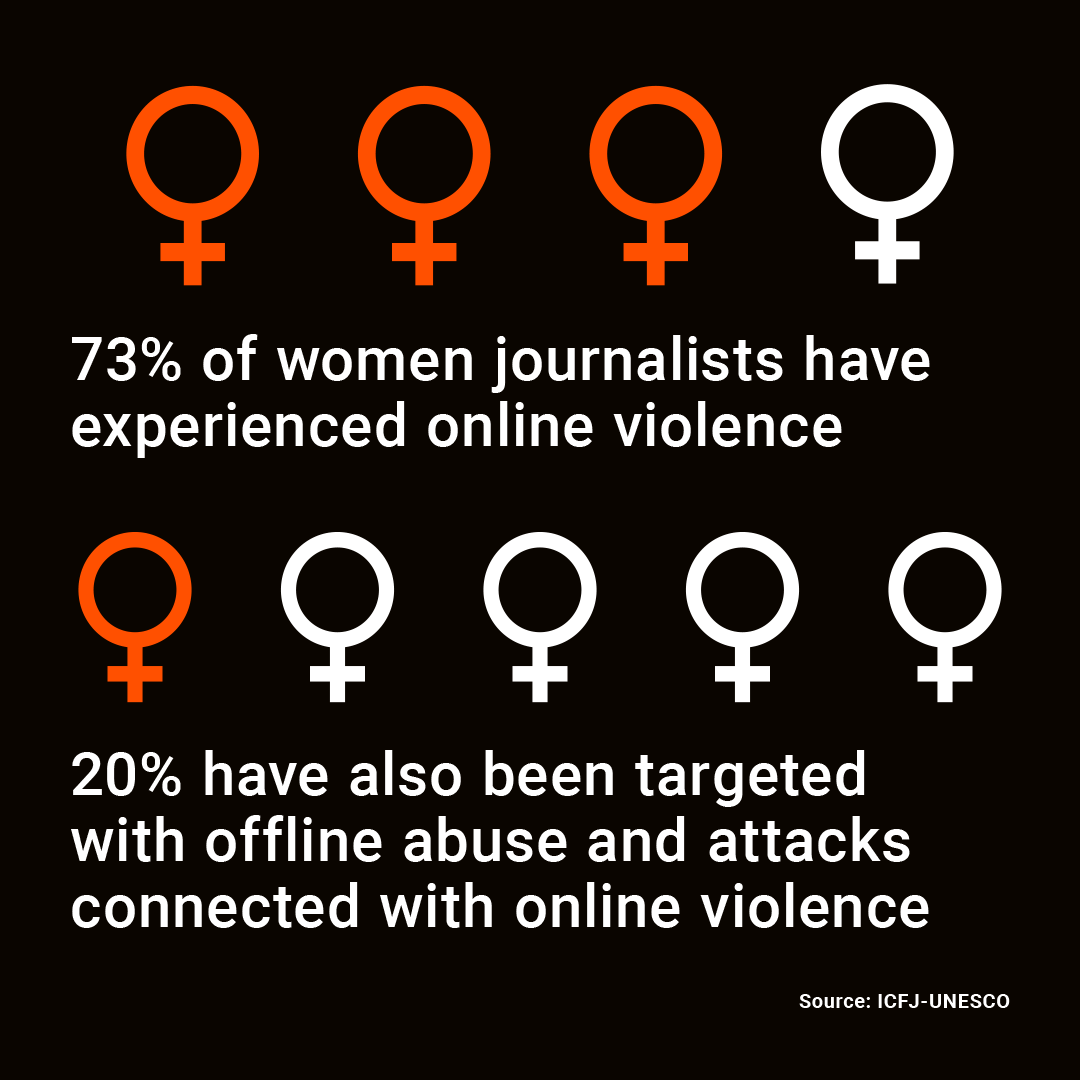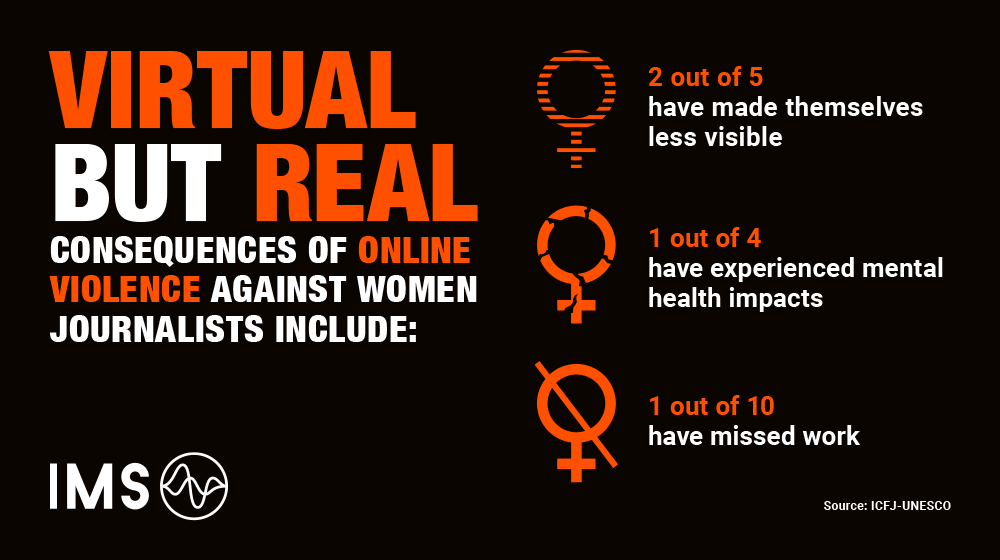
Virtual but real: Online violence against women journalists
Today on International Women’s Day, IMS wants to shed light on the issue of online violence against women journalists and the real-life consequences it has for the individual journalist, but also for gender equality and democracy as such
Violence online can take many shapes – physical threats, sexual harassment, doxing, stolen identities, false rumours, bot attacks drowning out social media profiles and posts, deep fakes, orchestrated disinformation campaigns and more. The common denominator of these many types of attacks – as well as of physical ones – is that they all contribute to silencing women in media and public debate, where women and their stories, perspectives and expert knowledge are already seriously underrepresented.
Women journalists are particularly targeted when it comes to online violence and live under a double threat – because of their gender and because of their profession and because they are journalists. Three in four (73%) women journalists have experienced some form of online violence[1], and they are four times more likely to experience these types of attacks than their male counterparts[2].

Policies and mechanisms are lacking
Today, many media organisations and employers as well as internet intermediaries across the world don’t have policies and mechanisms in place to address online violence, and that leaves the women journalists unprotected from attacks. It is an issue because the consequences of the online violence are grave and should never be reduced to the individual journalist’s problem or brushed off as just empty threats.
In fact, many of the consequences that women report have significant implications on their life, directly or indirectly. One out five women journalists (20%) have experienced that online abuse have been accompanied by offline attacks or abuse. Two in five (38%) have made them themselves less visible – for example by asking to be taken off air, writing behind a pseudonym or self-censoring on social media. One in four (26%) have experienced mental health impacts. One in ten (11%) have missed work due to psychological impacts) [3].

These statistics do not only reveal that women journalist today are exposed to online attacks to a high degree, but also that the consequences of the violence seeps out of the digital realm and into real life. They affect women’s sense of or actual security, their ability and will to work, their overall well-being, their career possibilities and their participation in public debate – an important democratic issue.
Creating societal change through improving safety of women journalists
Online violence against women journalists is an increasingly important – though often neglected and overlooked – issue that stems from the same patriarchal roots as other types of gender-based abuse. Failing to address this issue will affect gender equality on the whole. On the contrary, establishing policies and mechanisms to protect women journalists against online violence will benefit not only the media sector, but democracies and societies everywhere.
As IMS gender expert Emma Lygnerud Boberg sums it up:
“If safety of women journalists, gender sensitivity and inclusion are not made high priorities, media tend to replicate and reinforce deeply rooted biases that can have long-lasting and devastating effects on how society responds to important issues and ultimately to gender equality. Instead, media should provide a diverse account of the needs, perspectives and voices in society. If your workplace and content is diverse and reflects societies demographics, everything you publish will be more accurate, nuanced and attract a larger audience than if you don’t. It could potentially create positive changes on societal level and for policymakers. I would say that’s a win for everyone.”
IMS’ work on gender
IMS works to ensure fair, equal and safe working conditions for women journalists in more than 30 countries. We have a holistic approach to working with gender sensitivity and inclusion, and we keep high standards for ourselves as well as the partners we work with.
First and foremost, we ensure that all of our partners have the necessary mechanisms for reporting sexual harassment and other forms of abuse, so that workplaces are safe spaces for everyone. We support our partners in a variety of ways – according to their needs – so that women’s voices, perspectives and expertise are present in media, public debate and all other corners of society.
For some of our partners, safety is the most pressing concern. We collaborate with local actors to arrange training for media organisations and their management to raise the importance and profile of the issue and safety trainings for individual female journalists, both off- and online. We also prepare reports focusing on both problems and solutions in some of the most dangerous media environments in the world.
Other partners need help setting up systems that will flag if, for example, they have a tendency to only use men as experts and sources or they don’t give the same compensation, promotion or education opportunities to all of their employees regardless of their genders.
Additionally, we establish and support networks for women journalists where they can get advice, support and guidance and where together they can make demands of politicians and employers about fair working conditions.
We do all of this because we believe that freedom of the press ought to apply to all, no one should have to face abuse and threats online and that equal representation is necessary for every democracy in the world.
[1] https://unesdoc.unesco.org/ark:/48223/pf0000375136
[2] Becky Gardiner et al., “The dark side of Guardian comments”, The Guardian, 12 April 2016, https://www.theguardian.com/technology/2016/apr/12/the-dark-side-of-guardian-comments
[3] https://unesdoc.unesco.org/ark:/48223/pf0000375136




